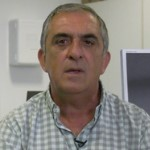Research and Development on DC-DC Power Converters
A special issue of Applied Sciences (ISSN 2076-3417). This special issue belongs to the section "Electrical, Electronics and Communications Engineering".
Deadline for manuscript submissions: closed (30 June 2023) | Viewed by 26231
Special Issue Editors
Interests: DC-DC converters; DC microgrid; electronic embedded systems
Special Issues, Collections and Topics in MDPI journals
Interests: DC-DC converters; DC microgrid; power quality; renewable energy
Special Issues, Collections and Topics in MDPI journals
Interests: power and performance efficiency in SoC (systems on-a-chip); dynamic voltage and frequency scaling; IoT electronics and applications
Special Issues, Collections and Topics in MDPI journals
Special Issue Information
Power DC–DC converters have become the main branch of power electronics, mainly due to the innumerable applications and power ranges where they are used. DC–DC converters are present in high-power systems such as DC Motor Drivers, Uninterruptible Power Supplies (UPS), Switched-Mode Power Supplies (SMPS), Renewable Energy Sources (RES), Hybrid/Electric Vehicles (HEV/EV), Distributed Generation (DG), Energy Storage Systems (ESS), Smart Grids (SG), Micro-Grids (μG) and many more. They are also used in low power applications such as cellular phones, Internet of Things (IoT), some low-power smart systems and medical applications.
This Special Issue is intended to cover a wide range of topics that comprise the field of DC–DC power converters, which will be of interest to a broad number of professionals of the industry and academia who are involved in the research, development, and use of this type of converters. Therefore, it can include papers that present emerging trends and practices on DC–DC power converters, reports on product research and development, key insights presented, as well as tutorials and surveys covering the theory and applications of these converters. Particular emphasis will be on reports on recent technology developments, deployments, and trends.
The topics of interest related with research and development on DC–DC power converters include, but are not limited to:
- Traditional and Emergent Applications
- High, Medium and Low Power/Current/Voltage
- Smart Power Management, Monitoring, IoT, Industry 4.0 and Smart
DC–DC Power Converters Applications - DC–DC Converters based on SiC and GaN Switches
- One or Several Switches DC–DC Power Converters
- Multiport DC–DC Power Converters: SISO, MISO and SIMO
- Multiphase Interleaved DC–DC Power Converters
- Soft and Hard-switching DC–DC Converters: MRCs, QRCs and PWM
- Low Voltage, High Efficiency and High Power Density DC–DC Converters
- Control Strategies, Modelling and Simulation
- State of the Art and Reviews on DC–DC Power Converters and Applications
Prof. Dr. Eladio Durán Aranda
Prof. Dr. Salvador Pérez Litrán
Prof. Dr. Jorge Filipe Leal Costa Semião
Guest Editor
Manuscript Submission Information
Manuscripts should be submitted online at www.mdpi.com by registering and logging in to this website. Once you are registered, click here to go to the submission form. Manuscripts can be submitted until the deadline. All submissions that pass pre-check are peer-reviewed. Accepted papers will be published continuously in the journal (as soon as accepted) and will be listed together on the special issue website. Research articles, review articles as well as short communications are invited. For planned papers, a title and short abstract (about 100 words) can be sent to the Editorial Office for announcement on this website.
Submitted manuscripts should not have been published previously, nor be under consideration for publication elsewhere (except conference proceedings papers). All manuscripts are thoroughly refereed through a single-blind peer-review process. A guide for authors and other relevant information for submission of manuscripts is available on the Instructions for Authors page. Applied Sciences is an international peer-reviewed open access semimonthly journal published by MDPI.
Please visit the Instructions for Authors page before submitting a manuscript. The Article Processing Charge (APC) for publication in this open access journal is 2400 CHF (Swiss Francs). Submitted papers should be well formatted and use good English. Authors may use MDPI's English editing service prior to publication or during author revisions.






